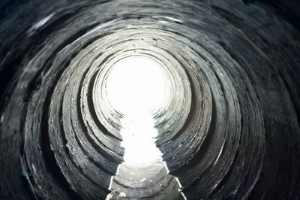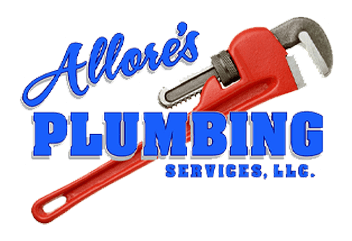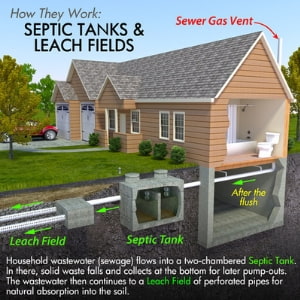Where Does Plumbing Waste go in Your Home?
Unless youÔÇÖre dealing with a backed up sink or an overflowing toilet, you likely donÔÇÖt consider where your household sewage ends up. Usually, you really start to wonder when it seems like your toilet is exploding and the race is on to pick everything up off of the ground.
Before a sewage problem gets to that extreme, itÔÇÖs smart to know what type of sewage treatment system your home uses and how to care for it. WeÔÇÖre going to explain the two most common types of sewage treatment options and how to know which one you have! Keep reading for more information.
How to Know if Your Home Has a Septic Tank
Septic tanks arenÔÇÖt quite as common as they used to be, but there are still homes that use them. Typically these homes are in rural areas that do not have a municipal sewage treatment facility. If youÔÇÖre still unsure if this is the system used in your home, here are the best ways to tell:
- Your sewage treatment bill reads $0.00.
- Your neighbors have a septic tank.
- Water is from a well.
- You cannot locate a water meter on your property.
Now that you know whether or not you have a septic tank, letÔÇÖs look at how they work.
All wastewater and sewage drain into a holding tank (AKA the septic tank.)
The tank allows the waste to separate with the solids sinking to the bottom forming sludge and the fats rising to the top forming scum.
What is left between these two layers is actually relatively clear water. As more sewage is drained into the tank, the water is pushed out into a drain field. The drain field consists of perforated pipes buried in trenches.
The water leaches into the soil where it is naturally cleansed of any remaining phosphorus and nitrogen. This process is completely safe and is actually good for the surrounding plants–you can see for yourself how green and lush they are!
Are Sewer Systems That Much Different?

Instead of going into a septic tank, it goes into the sewer main that flows to the treatment center. Municipal treatment centers can treat wastewater up to three times.
The first stage acts similarly to a septic tank. About 50% of waste is removed and if the no further treatment is used, the remainder of the water is treated with chlorine.
If the cityÔÇÖs sewer system treats the water a second time, bacteria will be used to eat up to 90% of contaminants in the water. If this is the last stop for the water before being discharged, it will then be treated with chlorine and other chemicals.
Finally, if the system treats the water a third time, it may be run through filter beds or treated with certain chemicals to remove the remaining nitrogen and phosphorus. If youÔÇÖre wondering about whether or not chlorine is used, it likely is.
Other Types of Water Disposal

These systems require a good bit of maintenance to function properly. Another form of waste disposal is composting toilets.
Most of the water is evaporated while the solid waste is composted (bacteria destroys all pathogens and viruses). If you liked what youÔÇÖve read, share the information with your friends. If youÔÇÖre curious about your homeÔÇÖs sewage treatment and want to consider your options, give AlloreÔÇÖs Plumbing Services, LLC a call!



